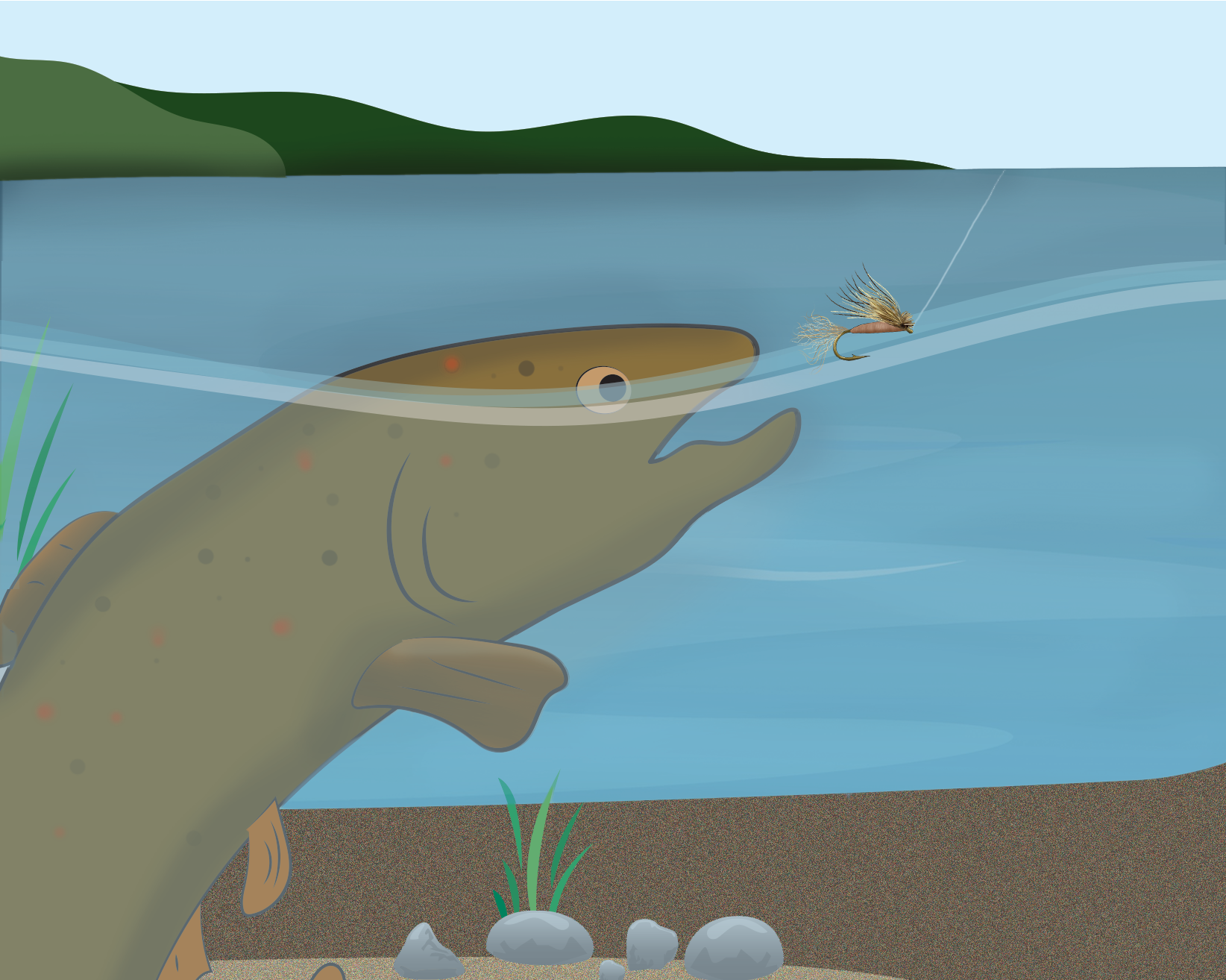FLY FISHING
Fly fishing is a fun and challenging
way to catch many types of fish. Flies usually imitate aquatic
insects, baitfish, and worms. These
aquatic insects and other bait are the fishes main food source. Flies are
lightweight and are not typically cast with
baitcasting or spinning rods. A specialized
fly fishing rod, reel, and line is needed.
FLY FISHING EQUIPMENT
- Fly rods are available in different length and are rated by "line weight." Common lengths range from 7.5 - 9 feet.
- Fly line is rated by weight on a numbered scale, with smaller numbers being thinner and larger numbers being thicker. Lines with a weight of 4, 5 or 6 are all good options to cast trout-sized flies.
- Fly reels store the line and helps balance the rod near the handle. Reels are rated by line weight.
- Leader is the tapered section of a fishing line tied between the fly line and the tippet.
- Tippet is the thin section of the fishing line after the leader. Flies are usually tied to the end of the tippet.

- Fly box is for storage and organization of flies.
- Hemostats (pliers) are a tool that assists with fly removal from a fish's mouth.
- Line clipper (small scissors)is a tool that cuts fishing line.
- Micro splitshots are small weights attached to the leader that sink flies.
- Strike indicator is a small float attached to the leader and used for underwater fly setups.
- Fishing vest provides storage for tackle and equipment
- Waders, hip boots or knee boots keep you dry in the water.
- Net helps you to land and release a fish
FLIES AND TECHNIQUES

Dry Flies
- Dry flies float on the surface and imitate adult insects.
- Dry Fly Fishing - Cast upstream and allow the fly to pass over feeding fish.
Nymphs
- Nymphs are fished below the surface and imitate juvenile life stages of insects.
- Nymph Fishing - After you cast, allow the nymph to tumble with the current along the stream bottom. Use a strike indicator on the leader to sest the nymph at proper depth. A splitshot on the tippet allows the nymph to sink to the bottom.
- Streamers are fished under the surface and imitate small fish and other swimming food.
- Streamers may be fished multiple ways in different water conditions. Cast and work the streamer back toward you. - OR - Let the current determine the direction of the streamer while you keep a tight line.
FISHING TACKLE
Lightweight fly rods, casting
2-weight to 4-weight lines, can
be fun, except when it’s windy.
Most of the time, rods throwing 4-weight to 6-weight lines
are the best. Leaders don’t
have to be long and thin,
about 7 feet tapering to 2X
or 3X should do it.
Spinning or spincast gear
can also be used to throw
flies. Clip a small (3/4-inch)
bobber about 6 inches to a
foot above the fly. Actually,
you are casting the bobber and the
fly just goes along for the ride.
There are a couple of casting
bubbles made just for this purpose.
They work even better.
FLY TYING
Flies use natural and artificial materials to imitate insects, fish and other things fish eat.
What you need:
- Fly tying vise
- Thread - size 6/0
- Bobbin
- Hooks
- Scissors
- Hackle pliers
Tying a "Woolly Worm"
You'll need:
- Hook
- Chenille or yarn of any color
- Hackle (chicken feathers) of any color
- Secure the hook in the vise.
- Attach the thread by laying it across the hook and wrapping the thread toward the rear of the hook.
- Use thread wraps to attach materials to the hook.
- Attach one piece of chenille and one
feather at the bend of the hook.
- Wrap the thread to the front of the
hook.
- Wrap the chenille forward, secure it
with thread, and cut off the excess.
- Wrap the feather forward, secure it
with thread, and cut off the excess.
- After attaching all the materials, knot
and trim the thread.
- Glue your thread wraps if you like, and
go fishing!